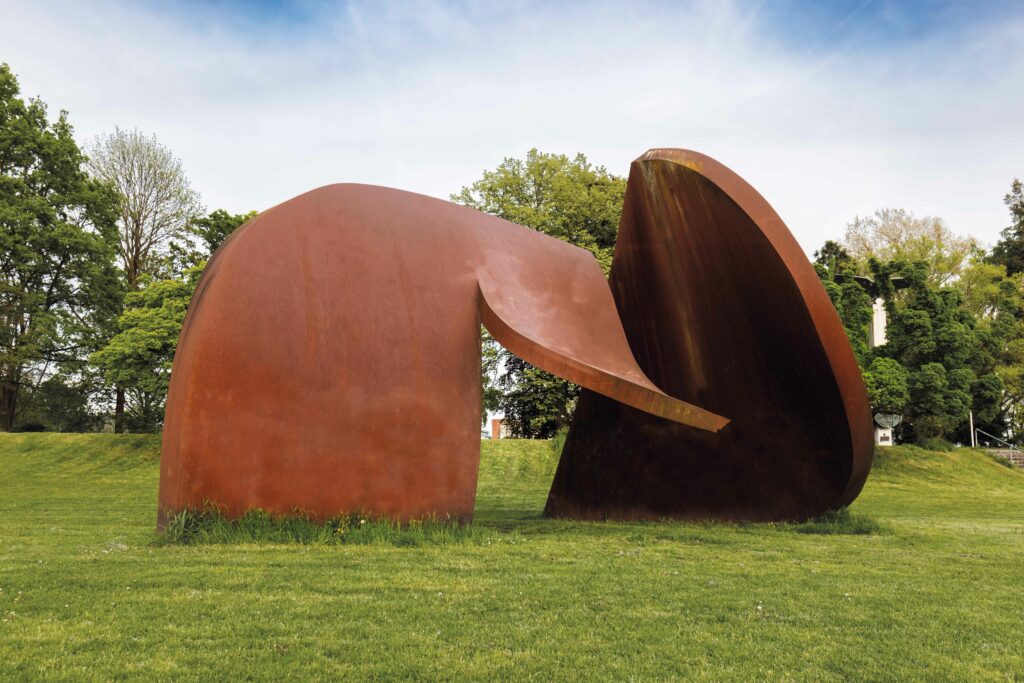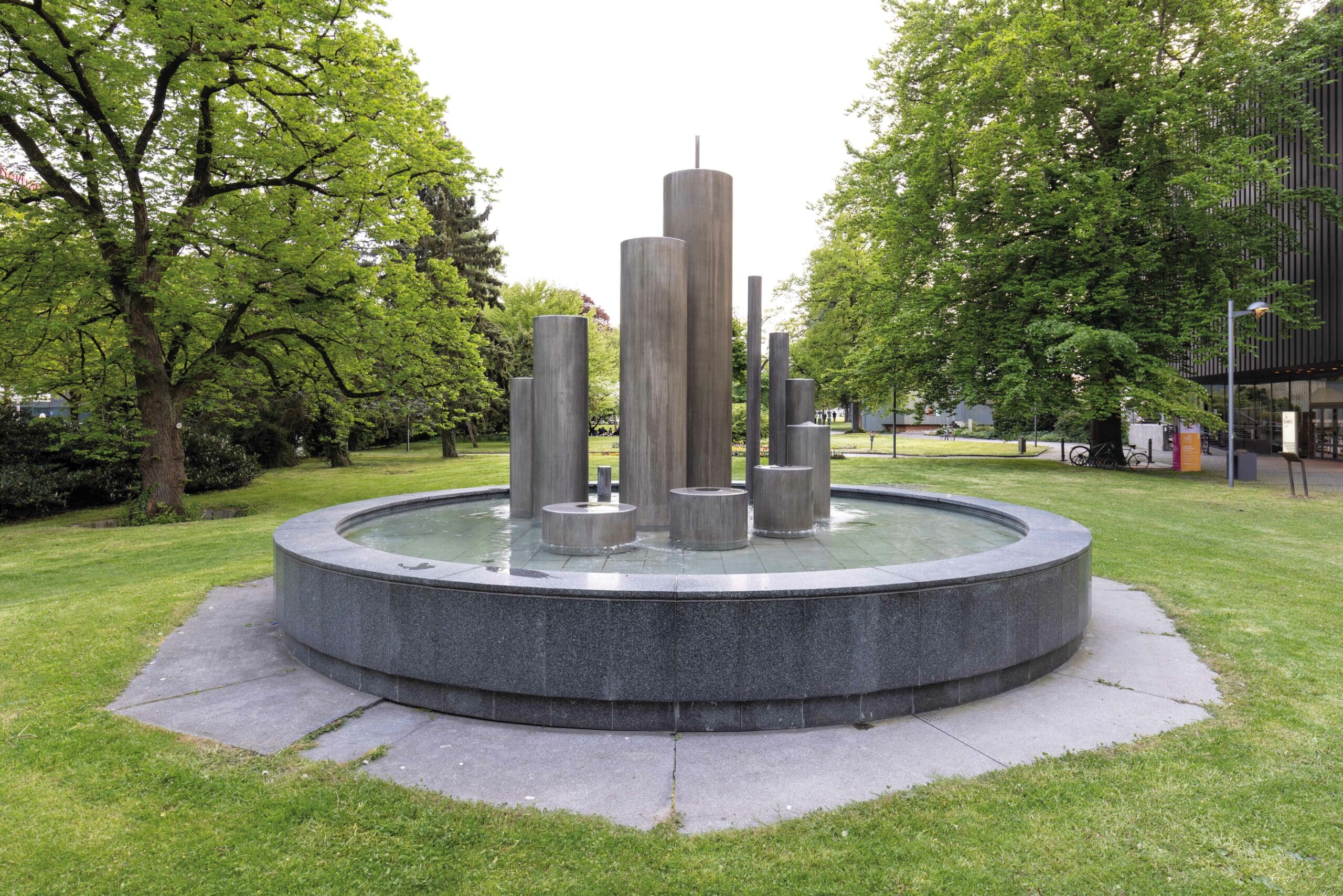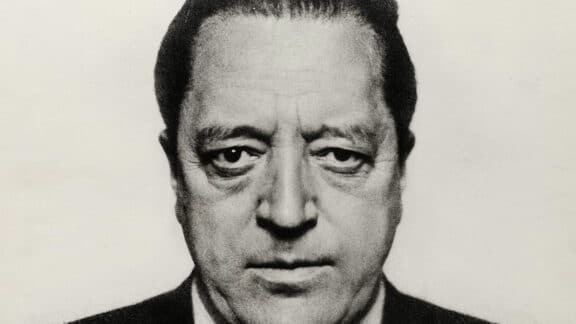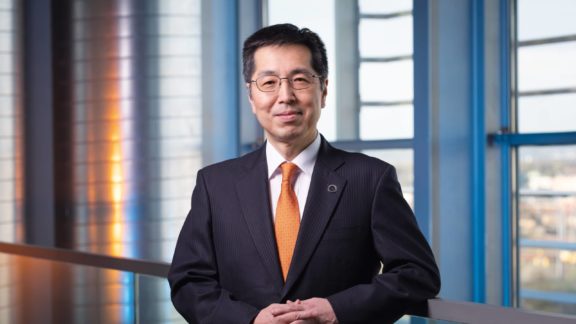Steel is a crucial material in our society. Its strength and malleability have allowed it to be transformed into varying shapes and structures, from automobiles to towering skyscrapers. In this series, we explore how steel has become a part of our world—in the most conspicuous and inconspicuous ways. Here, we explore the aesthetics of steel and the meeting point between strength, scale, and art.
Steel has often been categorized as a “cold” material. However, its association with the avant-garde, futurists, constructivists, modernists, and brutalists, to name a few, demonstrates how aesthetically charged the material itself truly is. Steel speaks to a specific aesthetic, but can it be beautiful and awaken aesthetic considerations like a painting or piece of music? Apart from being a part of our infrastructures and buildings, steel has broken and redefined boundaries of what is considered art over the last century.
An Art History of Steel
The use of metal in artworks dates back several centuries. Whether in engravings or bronze moldings, various metals have been applied to produce objects of aesthetic value. However, at the turn of the century in 1900, the artistic landscape began to transform. Amidst revolution and war, the avant-garde movements of Europe began to reshape aesthetics according to a quickly emerging modern landscape. From the cubist redefinition of space on a two-dimensional plane to the revolutionary mindset of the constructivists, the materials embraced by the artistic community began to incorporate metal, plastics, and concrete. Among these famous incorporations of steel in sculpture was “The Constructed Head no. 2” by Naum Gabo, using galvanized iron sheets. The original work reflects the cubist influence of the early twentieth century.
As the price and cost of steel production decreased into the mid-twentieth century, thanks to industry advancements and new techniques for treating steel, steel quickly became more common for artists in the twentieth century. Moreover, the movements pushing the boundaries of aesthetic expression also began to shift focus. Minimalism and post-minimalism both began to emerge in the 1960s. With a flair for the dramatic, minimalist sculptures utilized industrial materials and favored anonymity. The subject of the art was no longer any suggestion of symbolism or emotional content but focused on the material itself. Post-minimalism attempted to reimbue emotional and expressive qualities while maintaining abstraction, anonymity, and a focus on the material.
Located in the heart of the “Steel City” of Linz, Austria, forum metall is a collection of sculptures from national and international artists, placed along the Danube River. With its beginnings in 1977, Helmuth Gsöllpointner and Peter Baum wanted to represent and visualize the intimate connection between art and industry unique to Linz. With several additions since 1977, forum metall remains one of the defining pieces of Austria’s industrial city.
Throughout our online article you’ll see pieces from forum metall, including (above) Helmut Gsöllpointner’s Evolution (1979). A fascinating hollow construction, “Evolution” originally served as the entrance to an underground garage, but is now a part of the open gallery.
Artists like Richard Serra, Tony Smith, and Beverly Pepper are well-known for their monumental and minimalistic artworks installed worldwide. Pushing the limits of space, often literally, minimalist and post-minimalist artists have significantly impacted contemporary modern art and sculpture.
A Truly Modern Material
With the subject of minimalist and post-minimalist art that emerged in the 1960s being primarily the material itself, steel became synonymous with grand modern sculpture. Its flexibility and malleability allowed artists to play with space on a scale that the early avant-garde only dreamed about—e.g., Vladimir Tatlin’s “Monument to the Third International” conceptualized in 1920 (pictured above). Steel technologies and access to industrial materials for artists meant that colors, materials, and space itself could become the artists’ canvas. These influences can be seen in contemporary art that produces large-scale artworks and often plays with steel as a material, creating a mirror surface and shapes to suggest a sense of lightness.

Two types of steel appear to be most prominent for artists—Corten or weathering steel and stainless steel. Corten steel has gained a degree of popularity in modern design and architecture. The design principle behind the steel is to eliminate the need for painting. Instead, Corten steel “weathers” as a rust-colored patina develops over the surface, protecting the steel from the elements. Alternatively, stainless steel does not rust and offers malleability and flexibility. For example, stainless-steel sculptures can be welded, machined, bent, finished with various surface treatments, and even colored. What’s more, something about the material character of steel sees its lasting impact into the twenty-first century.
Monumental Steel
Perhaps it is something inherent in the material of steel as a durable and sustainable material that makes it the preferred choice for monumental outdoor sculpture. Looking at Richard Serra’s work “Tilted Arc” from 1981, one is struck by the images of a nearly 40-meter-long, 4-meter-high structure out of Corten steel that dissects the Foley Federal Plaza in Manhattan. Despite its minimalist characteristics and lack of emotional content, the response to the work was anything but emotionless. From signed petitions by frustrated commuters to a court hearing on freedom of speech, “Tilted Arc” created a space for individuals to consider space, presence, and art.

Unlike Serra’s “Tilted Arc,” some monumental pieces have come to define spaces. “Cloud Gate” in Chicago’s Millennium Park is precisely one such structure that has become a part of the city of Chicago’s culture. Revealed in 2004 and affectionately nicknamed “The Bean,” the mirrored stainless-steel surface reflects the city’s skyline and surrounding green space. The mirrored surface invokes playfulness as visitors move around the massive, polished structure. This type of playfulness in mirrored stainless steel has come to be associated with much of contemporary art.
Jeff Koons has become a household name in the art world. His balloon structures bring the utmost sense of lightness to the room, apart from the fact that his stainless-steel sculptures are by no means light. His stainless-steel balloons, coated with a transparent color treatment, look and feel like the much-beloved inflatables one sees at the circus or an inflatable animal that could float away if you don’t hold on tightly. Despite his controversy in the art world, his unwavering optimism creates a humorous challenge to the minimalist ideas of the steel monument.
I try to make pieces that are durable. One of the reasons that I work in steel is durability.”
Jeff Koons
Contemporary American artist
From stainless steel inflatable animals to plants in polished stainless steel, Subodh Gupta creates monumental objects by combining stainless steel objects that reflect more than just the surface. Gupta’s “People Tree” from 2017 is a recreation of India’s banyan tree. The piece is a marvel of steel construction and expresses life in India for Gupta within its imagery. Ordinary stainless-steel pots, pans, and kitchen objects are polished, creating a gleaming metallic effect, reflecting a time when stainless steel was sought as a luxury item in India. While the sentiment may change today, given India’s economic growth, the work demonstrates the ability to transform simple objects into extraordinary ones.


